Arthosis is a chronic joint disease in which the cartilage of the joint is progressively destroyed.As the cartilage is destroyed, changes in the bone that covers the cartilage and in the articulation capsule arise.However, this description is not entirely precise, since with osteoarthritis in the joint there are some inflammatory changes.In countries that speak in English, "our" osteoarthritis in the vast majority of cases is called arthritis (arthritis), that is, inflammatory joint disease (Iitis suffix), although they generally call us arthritis, joint damage to rheumatic diseases, infectious and infectious damage to the joint, etc.Sometimes they try to correct this disinfecting with another term: arthroso -artritis, but it is a purulent damage to the joint, etc.Sometimes they try to correct this disinfecting with another term: arthroso -Barthithis, but it is rare strange damage.
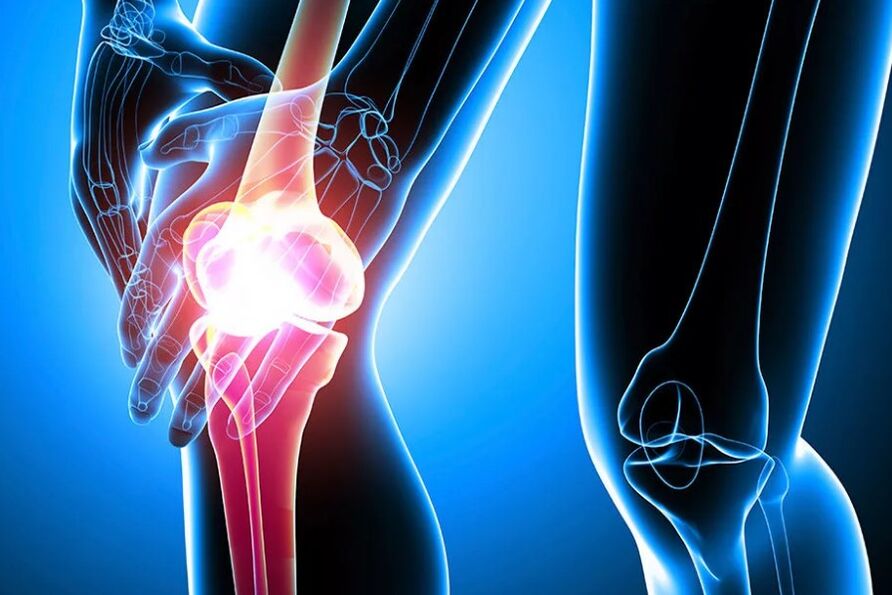
In modern scientific articles, the term osteoarthrosis is found more frequently (of the Greek words "osteo" - bone, "arthros" - articulation, that is, non -inflammatory disease of the joint and bones).And again, in the countries that speak in English, "our" osteoarthritis is called osteoarthritis (Ostthoarthritis), that is, inflammatory disease of the joint and bone.In fact, osteoarthritis and arthritis are synonyms, and their doctors talked about the same.
As we have already pointed out from the beginning, with osteoarthritis (osteoarthrosis), the cartilage is progressively destroyed and the bones are gradually involved in the process.With osteoarthritis in the bone, a section of sclerosis (compaction) is first produced, as a result of the loss of shock absorbent properties.Then there are points along the bone edges (exostosis), which are often called by mistake "
Sales deposits
Como ya hemos señalado desde el principio, con la artrosis (osteoartrosis), el cartílago se destruye progresivamente y los huesos están involucrados gradualmente en el proceso. Con la artrosis en el hueso, primero se produce una sección de esclerosis (compactación), como resultado de la pérdida de propiedades absorbentes de choque. Luego hay puntos a lo largo de los bordes del hueso (exostosis), que a menudo se llaman por error "Depósitos de sales" - In fact, with ordinary osteoarthritis, there are no salts of salts. With an additional course of the disease, the bone begins to bend, deform and cysts are formed: the disease is often calledArthosis were considered unknown for a long time, so there is another name for this disease - idiopathic osteoarthritis , that is, osteoarthritis, which arose for unknown or spontaneously.More frequently those joints that experience maximum loads (hip, knee, ankle joint, hand joints).In most cases, osteoarthritis affects both joints of the knee, while one of the joints can be more destroyed.It means the defeat of three or more joints (two symmetrical, for example, both the knee and some other)Causes of its occurrence, primary and secondary osteoarthritis is distinguished.
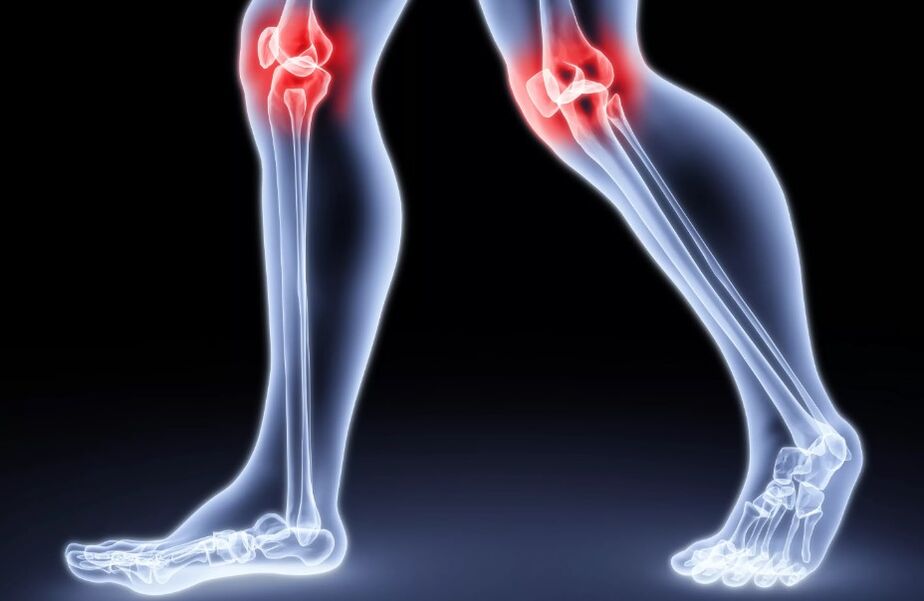
Artrosis idiopática, es decir, artrosis, que surgió por razones desconocidas o espontáneamente. Por supuesto, ahora los científicos ya no consideran la artrosis a un misterio y se conocen las razones de su desarrollo. Más sobre las causas de la artrosis, sobre lo que está debajo de la artrosis primaria y secundaria.
La artrosis afecta con mayor frecuencia aquellas articulaciones que experimentan cargas máximas (cadera, rodilla, articulación del tobillo, articulaciones de la mano). La artrosis de la articulación de la cadera se llama coxartrosis (de la palabra "coxa" - cadera), la articulación del tobillo - crurosteoartritis ("cruuris" - parte inferior de la pierna), rodilla - Gonartrosis ("Gene" - rodilla). En la mayoría de los casos, la artrosis afecta ambas articulaciones de la rodilla, mientras que una de las articulaciones puede ser más destruida. En este caso, el diagnóstico suena como una gonartrosis bilateral con un daño predominante en la articulación de la rodilla derecha (o izquierda).
A menudo, no una, pero varias articulaciones se ven afectadas por la artrosis, por lo que usan otro término - Poliosteoartrosislo que significa la derrota de tres o más articulaciones (dos simétricas, por ejemplo, tanto la rodilla como de alguna otra). En este caso, el diagnóstico generalmente suena de la siguiente manera: poliosteoartrosis con un daño predominante en las articulaciones de la rodilla (o una de ellas).
¿Por qué se produce la artrosis de la articulación de la rodilla?
La artrosis de la articulación de la rodilla es diferente. Dependiendo de las causas de su ocurrencia, se distingue la artrosis primaria y secundaria.
Primary osteoarthritis of the knee joint
The joint cartilage is constantly destroyed and updated, and normally these processes are balanced.With age, the cartilage update slows down and the destruction of the cartilage, which is called degradation or degeneration process, begins to prevail.
The process of synthesis and destruction of the cartilage is normally balanced.If the degeneration begins to prevail, then the osteoarthritis of the knee joint will begin
In most cases, the degeneration of the cartilage, that is, the development of osteoarthritis, occurs after 45-50 years, but sometimes the osteoarthritis can develop in 20 years.Fortunately, the development of osteoarthritis at such an early age is extremely weird.As a general rule, if osteoarthritis occurs, then at the age of 40-60, and if at the age of 60 there are no osteoarthritis, it is most likely that it is no longer, or rather, osteoarthritis will be insignificant (certain degenerative changes in the knee joint are found in all the elderly, but express themselves differently).60 years, then almost 90%will be signs of osteoarthritis, but not all of them feel their knees as problems.This is especially true for men who often "serious" osteoarthritis are not shown or causes a minimum inconvenience.
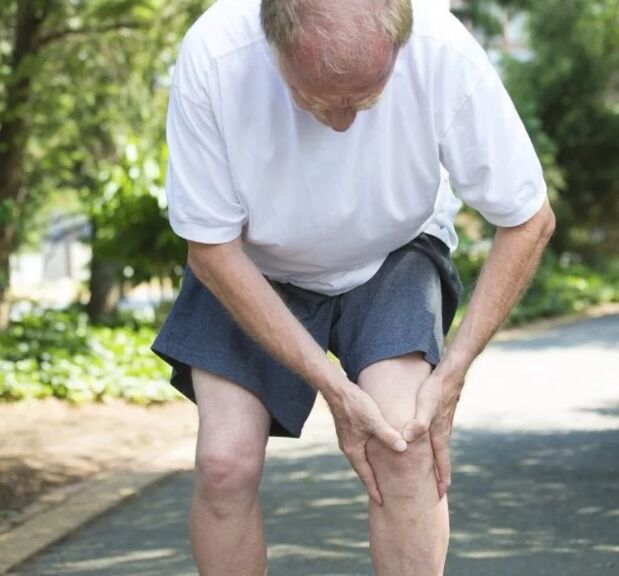
Primary osteoarthritis occurs spontaneously, that is, without launch factors, therefore, it is called idiopathic, what we speak previously.
Therefore, we have already discovered that age is one of the main factors that determine the development of osteoarthritis, since the degeneration processes of the cartilage begin to prevail with age.Each fourth person over 55 suffers from osteoarthritis from the knee joints.But we also point out that with age, osteoarthritis does not develop in all.So there are other reasons.Before listing them, we observe that there is no main and main reason.The osteoarthritis of the knee joint develops in terms of causes, while some play an important role, while others, less.
Por lo tanto, ya hemos descubierto que la edad es uno de los principales factores que determinan el desarrollo de la artrosis, ya que los procesos de degeneración del cartílago comienzan a prevalecer con la edad. Cada cuarta persona mayor de 55 años sufre de artrosis de las articulaciones de la rodilla. Pero también señalamos que con la edad, la artrosis no se desarrolla en todos. Entonces hay otras razones. Antes de enumerarlos, observamos que no hay una razón principal y principal. La artrosis de la articulación de la rodilla se desarrolla en términos de causas, mientras que algunas juegan un papel importante, mientras que otros, menos.
Floor. More often, women in the knee are suffered by women.The exact reasons for this are unknown, but you can try to explain the following reasons.On average, women's life expectancy is greater than in men and, consequently, the average old woman will express more degenerative processes.In addition, body weight in women is on average slightly larger.The size of the bone in women is smaller than in men and, together with a higher body weight, this leads to greater pressure in the knee joint and, consequently, a more intense mechanical destruction of the cartilage.In the overwhelming majority of cases in women, osteoarthritis begins to appear after the cessation of menstruation and, possibly, estrogen deficiency determines the development of osteoarthritis.Keep in mind that attempts to treat the osteoarthritis of the knee joint in women after menopause by estrogens, of course, are carried out, but so far they are not successful.
Weight. Of course, the greater the body weight, the greater the load that should be transferred to our knee joints.In addition, overweight reduces physical activity and leads to the weakness of hip muscles.For a more active synthesis of the cartilage, movements (without excess pressure) are necessary, and with a sedentary lifestyle, cartilage cartridge processes begin to prevail.Hip muscles are important stabilizers of the knee joint, and with the weakness of these muscles, the movement in the knee joint becomes more painted, which accelerates the destruction of the cartilage.In general, these processes can be described as a vicious circle: the greater the body weight, the faster the knee joint is destroyed, the greater the pain, the more difficult it is to move, which again leads to excess body weight.
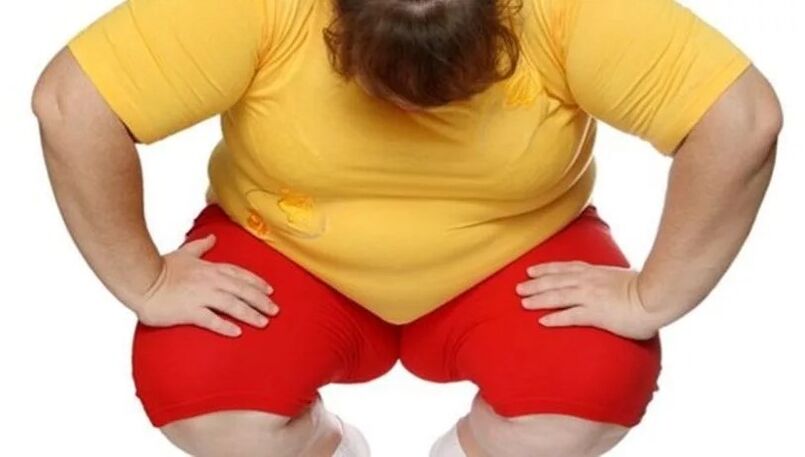
Vicious circle of obesity and osteoarthritis of the knee joint
On the other hand, only the osteoarthritis of the knee joint develops only among the complete people: those who do not have obesity can also suffer osteoarthritis.Again, this is because osteoarthritis has no reason.
Inheritance. For a long time it has been noted that the osteoarthritis of the knee joints is a "family" disease.If you have osteoarthritis or your parents, then, unfortunately, the probability of this disease is high with you.Scientists have discovered many genetic characteristics that are responsible, for example, the individual characteristics of the structure of the main cartridge - collagen, but, unfortunately, so far these discoveries have no practical importance, because we cannot affect the prevention or treatment of osteoarthritis.There is evidence that the inheritance of osteoarthritis is transmitted throughout the female line, which partially explains its great tendency to this disease.
The primary osteoarthritis of the knee joint does not occur only for one reason, but only by its entirety.At the same time, the osteoarthritis of the knee joint is in one grade or another in almost all people over 60 years, but the severity of osteoarthritis is very different and osteoarthritis is not always found in the radiography.In fact, it is even more difficult: no pain in the knee joint in an older person or, in addition, at the age of 40-60 years it will be accompanied by changes in the characteristic radiography of osteoarthritis.
For example, scientists have found that 76% of the elderly with knee pain complaints found osteoarthritis. That is, no pain in the knee joint in an older person is necessarily osteoarthritis of the knee joint. That is, not always the existing osteoarthritis hurts.It happens that changes in the radiography are completely insignificant, and the pain is strong, and it happens backwards: the joint is completely destroyed in the radiography, and a person can ride a bicycle, participate in the yoga, work as a evil one and such cases that we find almost every day.osteoarthritis from the inside.The blue arrow marked the external section of the joint and the orange: the interior of the joint.Pay attention to how the gap between the bones is already from within: the cartilage is not visible on the radiography, and it is this gap that means cartilage.In this case, there is practically no cartilage inside the knee joint and bone is already rubbed on the bone. With gradual abrasion of the cartilage from inside the knee joint, the leg begins to bend.Since osteoarthritis often affects both joints of the knee, that is, it is bilateral, both legs begin to twist and a foot deformation occurs in the form of O (deformation of the varior).
Estrictamente hablando, no existe una conexión obligatoria de la gravedad del dolor con la gravedad de la artrosis de la articulación de la rodilla en la radiografía. Sucede que los cambios en la radiografía son completamente insignificantes, y el dolor es fuerte, y sucede al revés: la articulación está completamente destruida en la radiografía, y una persona puede andar en bicicleta, participar en el yoga, trabajar como un malato y tales casos que encontramos casi todos los días.
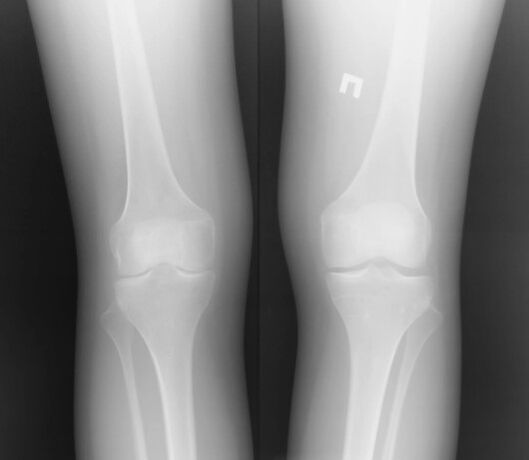
Más a menudo, la artrosis de la articulación de la rodilla comienza con el departamento interno (medial).
La radiografía de la articulación de la rodilla afectada por la artrosis desde el interior. La flecha azul marcó la sección externa de la junta y el naranja: el interior de la junta. Presta atención a cómo ya es la brecha entre los huesos desde adentro: el cartílago no es visible en la radiografía, y es esta brecha la que significa cartílago. En este caso, prácticamente no queda cartílago en el interior de la articulación de la rodilla y el hueso ya se frota sobre el hueso.
Con abrasión gradual del cartílago desde el interior de la articulación de la rodilla, la pierna comienza a doblarse. Dado que la artrosis a menudo afecta a ambas articulaciones de la rodilla, es decir, es bilateral, ambas piernas comienzan a torcerse y se produce una deformación en el pie en forma de O (deformación del varior).
Less frequent (in approximately 10% of cases), the external parts of the joint are affected by osteoarthritis, and in this case the deformation in the form of x (valgo) begins.Not only in the internal or external section, but also between the knee cup (bruise) and the intercord of the femur.This option is called Pasho-Fomoral osteoarthritis and occurs, as a rule, due to
inclination, subluxation of a pattern, side hyperpression syndrome
to which a separate article is dedicated on our website or later Fractures of the bruise , which you can also read in a separate article.Now we will talked briefly about secondary osteoarthritis options. Post -trotrosis of the knee joint. The injuries of the knee joint, of course, do not add a health joint and almost all, in one way or another, increase the risk of osteoarthritis.Unfortunately, anyone with the meniscus gap has had the probability of developing osteoarthritis.If a medial (internal) meniscus is damaged, then osteoarthritis will be developed inside the knee joint.And, consequently, if the external meniscus explodes, then osteoarthritis will be developed in the external joint of the joint.Keep in mind that meniscus rupture does not always necessarily lead to osteoarthritis, the probability of its development.Of course, the more the meniscus is damaged, the greater the risk of osteoarthritis.
La artrosis de la articulación de la rodilla también puede desarrollarse debido a cualquier causa específica, en este caso la artrosis se llama secundaria. Ahora hablaremos brevemente sobre las opciones de artrosis secundaria.
Artrosis post -trraumática de la articulación de la rodilla. Las lesiones de la articulación de la rodilla, por supuesto, no agregan una articulación de la salud y casi todas, de una forma u otra, aumentan el riesgo de artrosis.
Una de las lesiones más comunes de la articulación de la rodilla son las rupturas de los meniscos, que se dedica a un artículo separado en nuestro sitio web. Desafortunadamente, cualquier persona con la brecha del menisco ha tenido la probabilidad de desarrollar artrosis. Si un menisco medial (interno) está dañado, entonces la artrosis se desarrollará en el interior de la articulación de la rodilla. Y, en consecuencia, si el menisco externo explota, entonces la artrosis se desarrollará en la articulación externa de la articulación. Tenga en cuenta que la ruptura del menisco no siempre conduce necesariamente a la artrosis, la probabilidad de su desarrollo. Por supuesto, cuanto más se daña el menisco, mayor será el riesgo de artrosis.
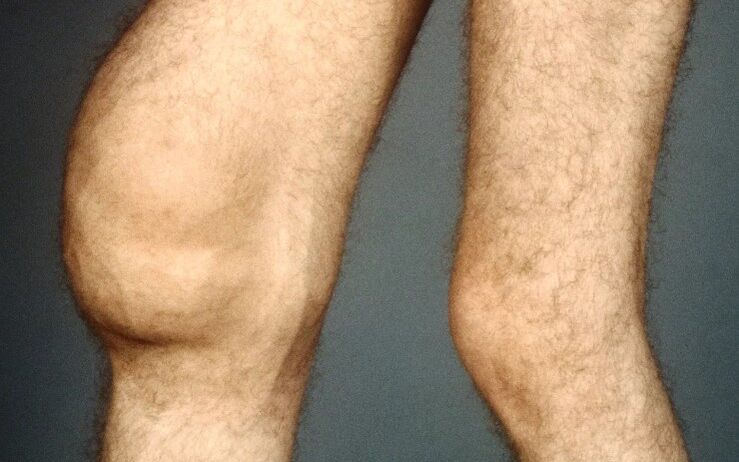
Another reason for the development of the osteoarthritis of the knee joint are the ruptures of the ligaments, for example, a rupture of the front cross ligament.As a result of the rupture of the ligament in the joint, instability may appear, which, of course, will cause damage to cartilage and the development of osteoarthritis.Naturally, cartilage damage depends on the degree of instability, which may be different.Almost any intra -articular fracture is accompanied by a displacement of fragments and, therefore, the shape of the joint surface changes.The step that appears as a result of the change inevitably leads to the progressive destruction of the cartilage and the appearance of osteoarthritis.Of course, the heavier a fracture is, the greater the intra -articular fracture of the fragments, the more the cartilage is damaged and the risk of osteoarthritis is greater.After the heavy fractures of multiple chairs of the tibial condyles, osteoarthritis develops in almost 100% of cases, even despite the perfectly performed osteosynthesis surgery (elimination of bone fragments and fixation with screws, plates, etc.)



















































